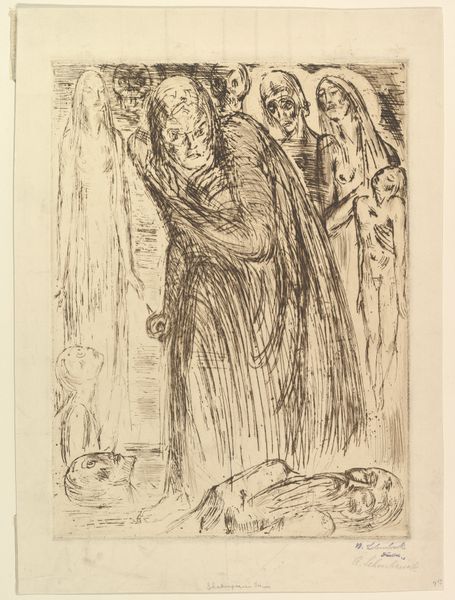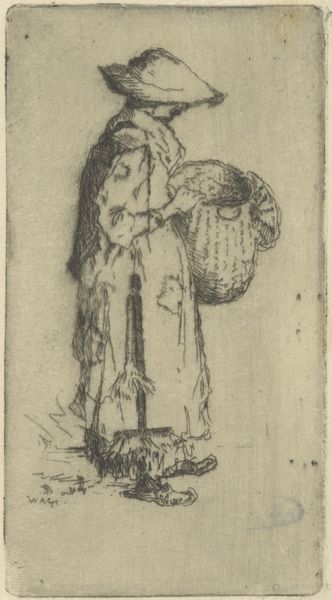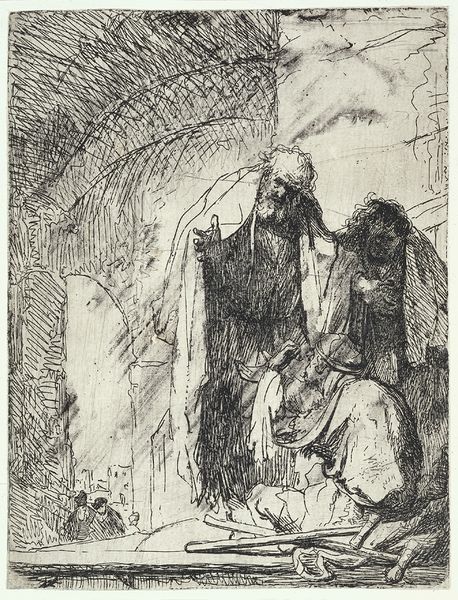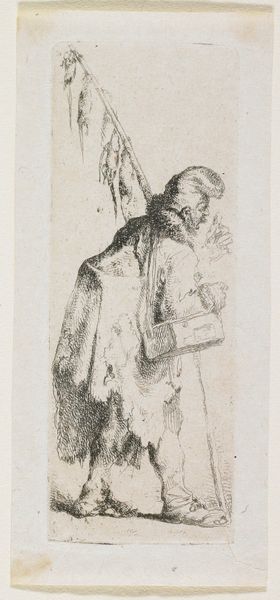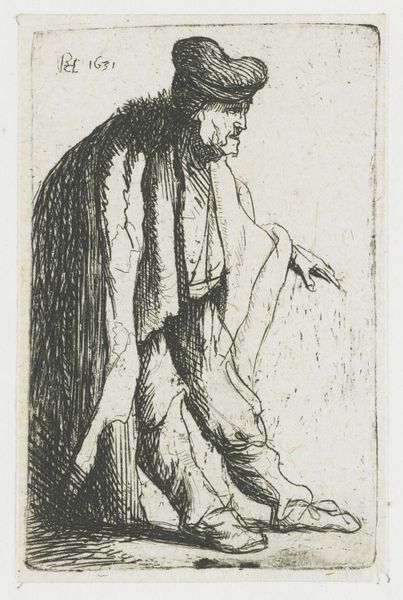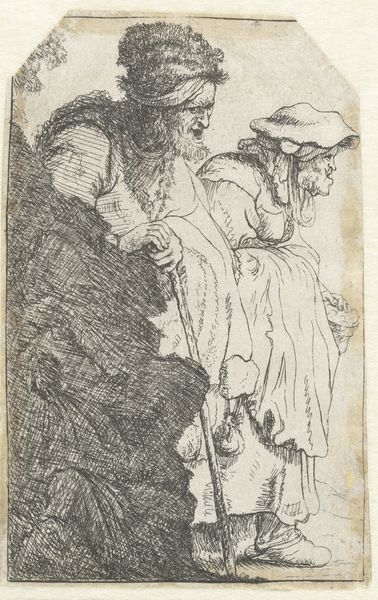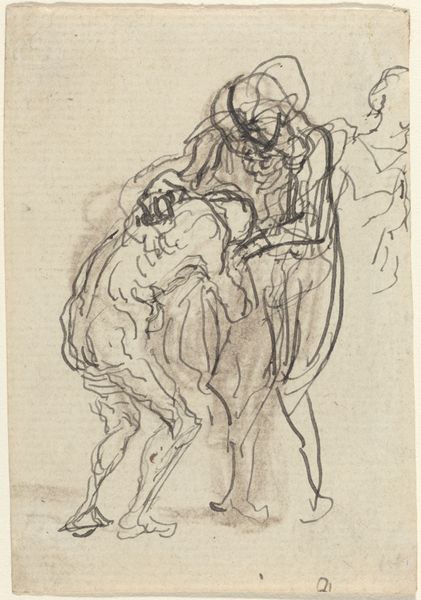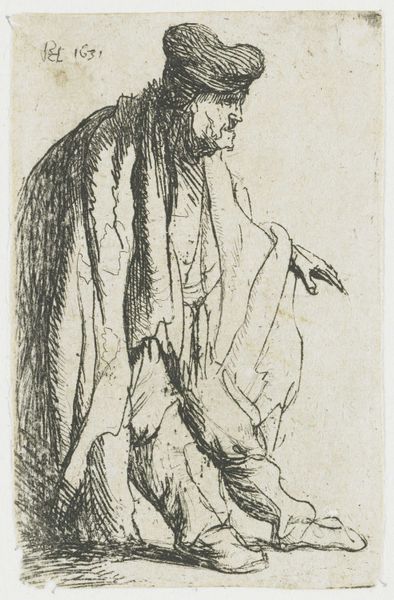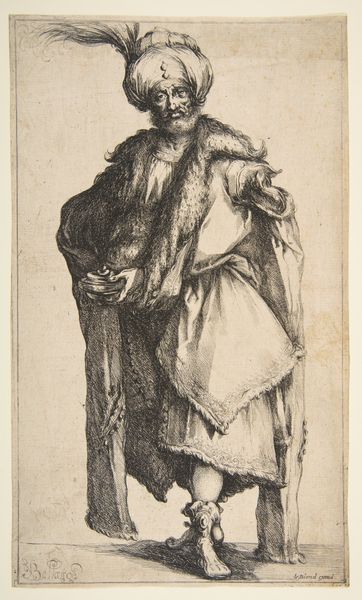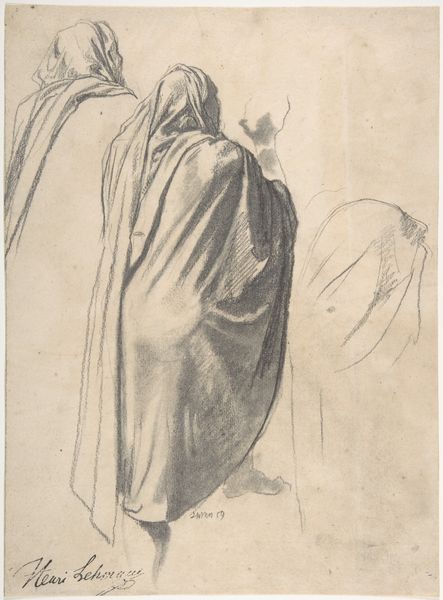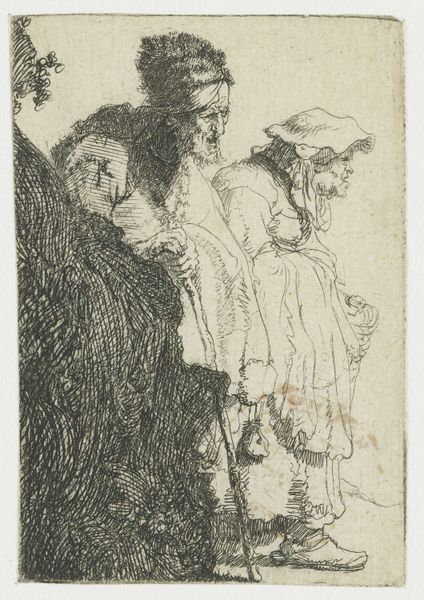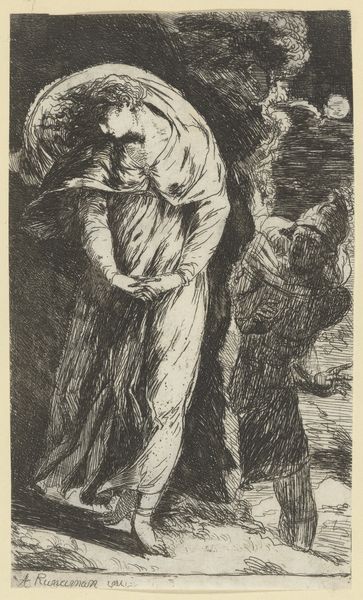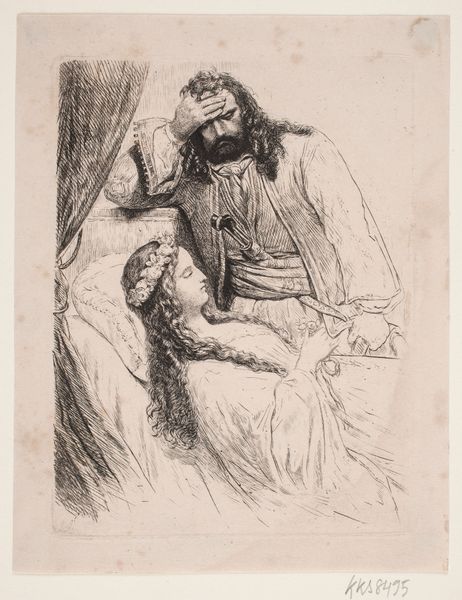
drawing, print, etching
#
portrait
#
drawing
#
baroque
# print
#
etching
#
figuration
Dimensions: Sheet: 4 1/2 × 2 5/8 in. (11.4 × 6.7 cm)
Copyright: Public Domain
Editor: This is Rembrandt van Rijn's etching "Beggar with a Wooden Leg," dating from 1625 to 1635. I'm struck by how much detail he achieves with just simple lines to show texture, shape, and emotion, particularly in the subject’s clothing and the overall mood of weariness. What do you see in this print? Curator: It is essential to observe how Rembrandt manipulates line and form here. Notice the density of the etched lines used to articulate shadow and create depth, particularly around the face and upper body. Observe how the direction of the lines—hatching, cross-hatching—establishes a three-dimensional effect despite the medium’s inherently flat nature. Consider the use of empty space. How does this strategic emptiness draw attention to certain focal points, directing the gaze and heightening the figure's isolation? Editor: I see it now; the areas of high contrast pull the viewer's eye right to his face and then down along the lines of his cloak. How intentional do you think that blank space is in constructing the subject’s narrative? Curator: A work such as this relies on its composition to evoke meaning. The visual weight is carried by the figure's upper body, achieved through concentrated line work, juxtaposed with the relative sparseness in the lower regions. It visually communicates instability, does it not? This invites speculation: what statement does the artwork make through such decisions? Editor: Absolutely. I appreciate the contrast now between detail and the space that amplifies his vulnerability, and even his resilience. It gives me much to consider in how to frame my understanding of his world and experiences. Curator: Indeed. By paying close attention to these compositional elements, we unlock deeper layers within the work and discover what makes Rembrandt such a remarkable artist.
Comments
rijksmuseum about 2 years ago
⋮
Rembrandt derived much inspiration from the figures he came across outdoors. However, he did not etch out on the street. He produced his prints indoors, in his workshop. His observations are no less telling for that fact. Both the beggar couple and the poor wretch with the wooden leg seem to be calling out loud, while the peasant in the middle looks on expectantly.
Join the conversation
Join millions of artists and users on Artera today and experience the ultimate creative platform.
